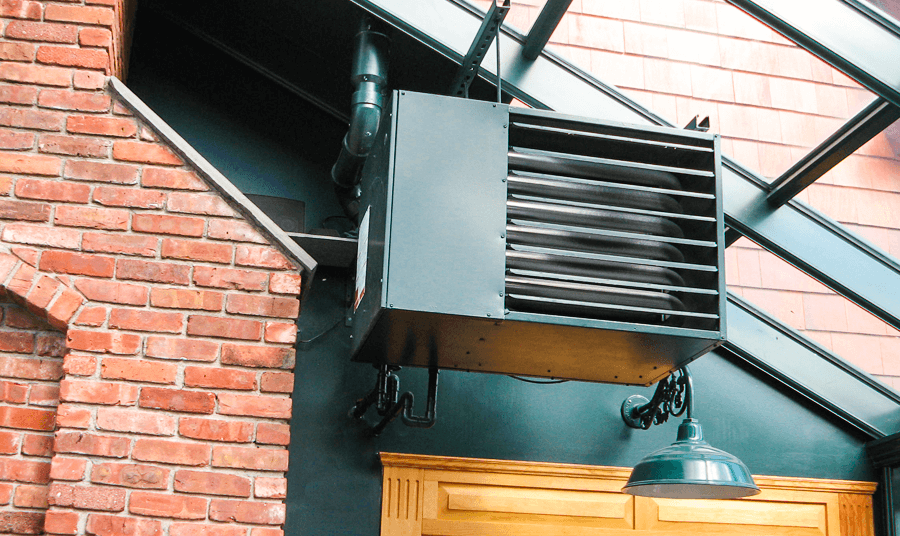Heaters
Solar Innovations® offers several heating options for warming your glass structures, including conservatories, sunrooms, pool enclosures, and greenhouses. Electric, hydronic, propane, and gas models are all available. If you are looking to install heating into a glass structure that is directly attached to your house, a separate heater may not be needed. In certain cases, your home’s existing heating system can be modified to include your glass space. No matter what heating system a structure requires, Solar Innovations® has the solution.
We offer four styles of heaters, including floor mounted units where vents are placed in the walls, roof hung units where vents are also placed in the walls, electric roof hung units that are ventless, and a wall mounted, direct vent version. Please review the below diagrams for heater layouts.

Temperature Control
Maintaining a consistent temperature in a greenhouse is critical to its success. Solar Innovations® offers various models that can all be programmed to work in conjunction with an environmental control system. Allowing Solar Innovations® and their staff to aid you in your greenhouse design may eliminate maintenance costs as well as increase overall efficiency. Depending on the gardener’s needs, several heating options may be utilized for the best solution to your greenhouse environment.
All heaters run efficiently through thermostatic temperature controls, a matchless ignition, and the wall thermostat* operation. Heaters also include automatic shut-off valves should the pilot extinguish for safety. The heaters have the ability to modulate both its burner and optional blower to provide the maximum efficiency and comfort, providing a relaxing, economical warmth using either natural or propane gas.
Hydronic Heating
Hydronic heat is a clean, healthy, and energy efficient method of heating a glass structure. The vent work in forced air units periodically need to be cleaned, unlike a hydronic heater. The motor of a hydronic heater does not blow air through vent work where dust resides, resulting in a cleaner system. These motors are also much quieter than those found in traditional heating options. The hydronic process begins with solar hot water panels warming the water which runs through a boiler. Thermal panels allow for an alternate way to create heat and save both energy and money. A pump then circulates the heated water which is transferred into the air and increases the room’s temperature. The cooled water is then returned and reheated. This type of heat creates a more evenly distributed temperature throughout a structure than forced air units, creating a steady temperature void of hot and cold pockets in the room. The temperature of the air being produced is generally consistent, and there are no drastic dips in temperature to cause uneven heating.
| Company | Model | BIU Output | Entering Air Flow (CFM) |
Heat Throw (ft.) at Max Height |
| Modine | HD30 | 24,000 | 505 | 25 |
| Modine | HD45 | 36,000 | 720 | 27 |
| Modine | HD60 | 48,000 | 990 | 36 |
| Modine | HD75 | 60,000 | 1,160 | 38 |
| Modine | HD100 | 80,000 | 1,490 | 42 |
| Modine | HD125 | 100,000 | 1,490 | 42 |
| Empire | DV20E | 20,000 | 350 | 25 |
| Empire | DV40E | 40,000 | 350 | 35 |
| Empire | DV55E | 55,000 | 400 | 50 |
| Markel Electric | 492296 | 25,000 | 375 | 25 |
| Markel Electric | 492290 | 11,200 | 375 | 20 |
















